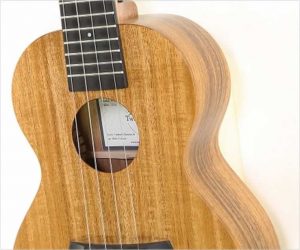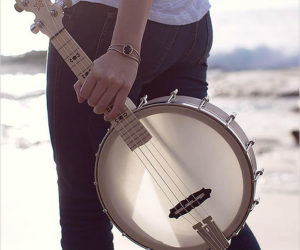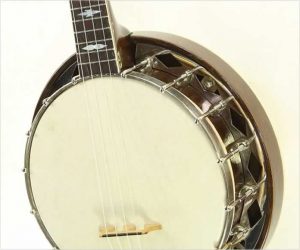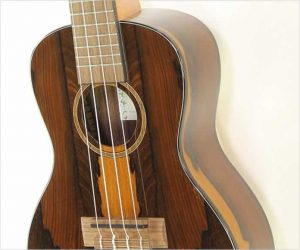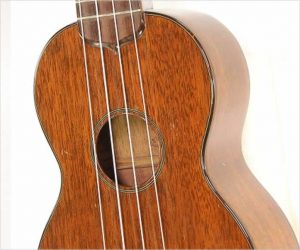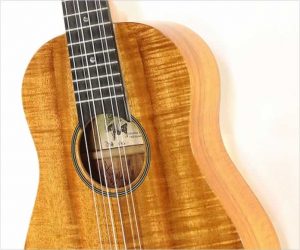Here we have a Twisted Wood Koa Concert Ukulele. Built using solid Hawaiian Koa for the top, back and sides, the neck is Mahogany with Ebony used for the fingerboard and bridge. In a departure from traditional Ukulele construction, a pin-style bridge as found on steel string guitars is used. This type of bridge is much easier to restring than the tie-block type found on traditional Ukes, and on Classical and Flamenco nylon string guitars.
Ukulele
Often called a banjolele, the Deering Goodtime Banjo Concert Scale Ukulele simply strum a few chords and you will be taken to a land without the stress and distractions of the daily routine. The nylon strings make playing easy on your fingers and the small size and light weight allows you to take this instrument with you literally anywhere – the beach, the office, camping, boating – you name it!
The Gibson UB4 Banjo Ukulele was built in Kalamazoo, Michigan from 1927 to 1935, and again in 1938. Gibson was relatively slow to the Ukulele market, but had been building banjos since at least 1918. The UB-4 is a professional grade instrument, with full flange and resonator. Gibson also offered the UB-5, which was this same instrument but with gold plated metal parts. This trim level would put it in the Mastertone range, but these Ukuleles don’t have the Mastertone tone ring.
This instrument has sold
MORE →The Kala Concert Ukulele Ziricote line features a rich, dark, chocolate brown wood accentuated by a honey blonde Sapwood in the middle and along the sides, finished in a high-gloss to make the details pop. On these instruments, solid Ziricote is used for the top, back and sides, with Mahogany for the neck and body blocks. The fingerboard and bridge are Walnut. Sealed tuners with black buttons are at the head. Aquila Nylgut strings are used, and tie on in the same manner as on a Classical or Flamenco guitar. The nut and saddle are Tusq.
This instrument has sold
MORE →The Martin Style 1 Soprano ukulele first appeared in 1917 and was built into the 1960’s, and has now been replaced by the Martin S1 ukulele. In the later part of the 1900’s and into the 1920’s and 1930’s, the ukulele and Hawaiian music (including steel guitar) were very popular, and Martin wanted part of the market. Though there were some prototypes built before WW1, Martin’s designs were not finalized until 1917 and the introduction of the Style 1 and Style 2; the Style 3 appeared in 1924.
This instrument has sold
MORE →Here is something rare and wonderful – a Kawika 6 string ukulele built in Hilo, Hawaii by legendary luthier David C Hurd of Koa and Ebony. David Hurd built ukuleles and guitar family instruments for many years in Hilo, capital of the Big Island, but retired some years ago partly due to toxicity of some of the more exotic woods used in higher end ukulele construction. His ukuleles are rarely seen on the market and are well respected for the quality of their construction and tone.
This instrument has sold
MORE →